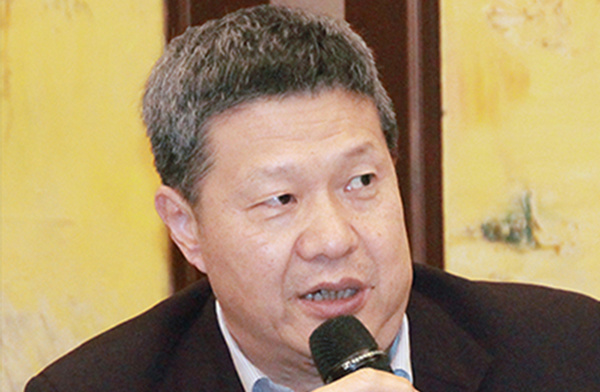Common prosperity: Core characteristic of China’s modernization
Author : Huang Qunhui Source : Chinese Social Sciences Today 2021-11-10

Huang Qunhui is director of the Institute of Economics at the Chinese Academy of Social Sciences.
In his speech at the ceremony marking the centenary of the Communist Party of China (CPC) on July 1, 2021, Xi Jinping, general secretary of the CPC Central Committee, solemnly declared that “we have realized the first centenary goal of building a moderately prosperous society in all respects,” and that “we are now marching in confident strides toward the second centenary goal of building China into a great modern socialist country in all respects.” This shows that the process of China’s modernization initiated by the CPC has entered a new stage. According to the 14th Five-Year Plan (2021–2025), by 2035, more substantive progress should be made in common prosperity for everyone, which has become a major strategic task in promoting China’s modernization. Therefore, we should grasp the following two policy frames.
Steady economic growth
Economic growth should be maintained within a reasonable range to achieve the economic growth goal of reaching the level of moderately developed countries by 2035.
To achieve common prosperity, we must first ensure “prosperity;” with the level of prosperity and the ability of expanding the “pie” continuously improving. Based on the law of modernization, the potential economic growth rates will decline in the later stage of industrialization and the post-industrialization period. According to the estimations based on population prediction models, capital stock estimates, and the total factor productivity calculations, the overall trend of China’s modernization process is stable. During the 14th Five-Year Plan period, China’s average GDP growth rate will be 5.4%. China’s average GDP growth rate will be 4.9% from 2021 to 2035, and the potential growth rate will remain above 3.3% by 2050. This shows that China’s economic growth will maintain sufficient potential for a long time. China is able to sidestep the “middle-income trap” during the 14th Five-Year Plan period, and its per capita GDP will basically reach the lowest threshold of moderately developed countries by 2035. However, on the whole, the potential foundation for economic growth to reach the level of moderately developed countries by 2035 is not solid. In the new development stage, the country needs to safeguard the stability and continuity of macro-economic policies, while promoting the effective coordination between supply-side structural reform policies and demand-side management policies, so as to realize the potential economic growth rates. The reform of systems and mechanisms should be deepened and high-level opening-up implemented, so as to improve the level of sci-tech innovation, self-reliance and self-strengthening, further smooth the national economic circulation, and continuously improve potential economic growth rates.
Improving income distribution
Improving the distribution pattern is an important breaking point to promote common prosperity in the promotion of high-quality development and building a new development paradigm. In the new development stage, the principal contradiction in China is the contradiction between unbalanced and inadequate development and the people’s ever-growing needs for a better life. How to improve the balance, coordination, and inclusiveness of development and promote high-quality development is the key to deepening modernization in the new development stage. The imbalance and insufficiency in the field of distribution is a major contradiction restricting high-quality development. From the perspective of building a new development paradigm, this is also a key constraint for the smooth circulation of all links of production, exchange, and consumption and the realization of a high-level dynamic balance between supply and demand.
The crux lies in the pattern of income distribution. The level of residents’disposable income and the share of labor remuneration in the primary distribution need to be improved. Moreover, the income gap among different industries and the urban-rural income gap are still relatively significant. In the new development stage, we need to deepen the reform of the distribution system centering on well-rounded human development. Attention should be paid to the inclusiveness and coordination of economic growth in the primary distribution, the strengthening of distribution and focusing on fairness and justice in the secondary distribution, and fostering enterprises’ social responsibilities and core socialist values in the tertiary distribution. This will not only directly promote the substantive progress of common prosperity, but also promote the formation of the domestic demand pattern with residents’ consumption as the mainstay, which is conducive to accelerating the construction of the new development paradigm of “dual circulation” that allows the domestic and overseas markets to reinforce each other, with the domestic market as the mainstay.
In the new development stage, on the premise of maintaining a reasonable economic growth rate, we should put promoting common prosperity in a more important position and make more substantive progress. The pie should be made bigger and divided better. This is a much more challenging and important task for national governance, and puts forward higher requirements for the scientific, democratic, and law-based governance.
Therefore, to promote common prosperity and make substantive progress, we must accelerate the modernization of national governance capacities and governance systems, so as to provide better institutional guarantees for the realization of common prosperity.
This is an excerpt from Huang Qunhui’s speech at The International Academic Forum in China 2021.
Ye Shengtao made Chinese fairy tales from a wilderness
Ye Shengtao (1894–1988) created the first collection of fairy tales in the history of Chinese children’s literature...
-
How northern ethnicities integrated into Chinese nation
2023-09-18
-
Mogao caves
2023-09-12
-
Mogao Grottoes as ‘a place of pilgrimage’
2023-09-12
-
Time-honored architectural traditions in China
2023-08-29
-
Disentangling the civilizational evolution of China
2023-08-28
-
AI ethics in science fiction
2023-08-23














 2011-2013 by www.cssn.cn. All Rights Reserved
2011-2013 by www.cssn.cn. All Rights Reserved